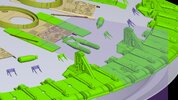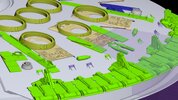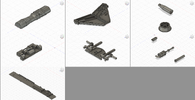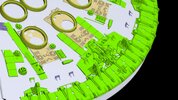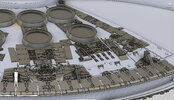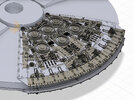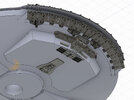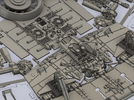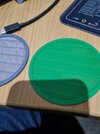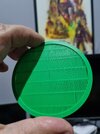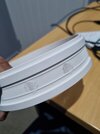OK I managed to get onto the Cockpit while I wait for my new printer to arrive.
I remodeled the Nav Chair, Console, Bulkhead, and Sidewalls using Joshua Maruska's excellent models as a base. I was more going for something that could be printed easily and show a bit more detail - so a lot of artistic license there, and a lot lower poly count
This led me to a ton of questions - a lot of what I have seen the bulkhead seems too far forward, even the blueprints it seems too far forward, once you add in the seats - there is no leg room really. (I also based off an old photo that the Vickers yoke has a pipe going to the floor, so the Pilot seats cant go that far forward.)
So I redid it, a lot of it based on the PG Bandai Model, which seemed to have it further back as well.
I have the panels for the nose cone to finish off, and a few extra internal wall details, and this one will be getting split and thrown at the printers.
It will be a mix of Resin for detail bits, FDM for the bulk of it.
Anyway, once I have these split and am happy with the end result, I will put the files up for everyone to use. and or refine.
At some stage I will do a version with support for lighting - but that might take a bit longer
First few prints - It looks like its more than capable of showing a bit more detail, so I will be improving these models as well
I also noticed Joshua's panels were missing this section which I am in the midst of adding, which in turn pushes the Bulkhead back as well.

